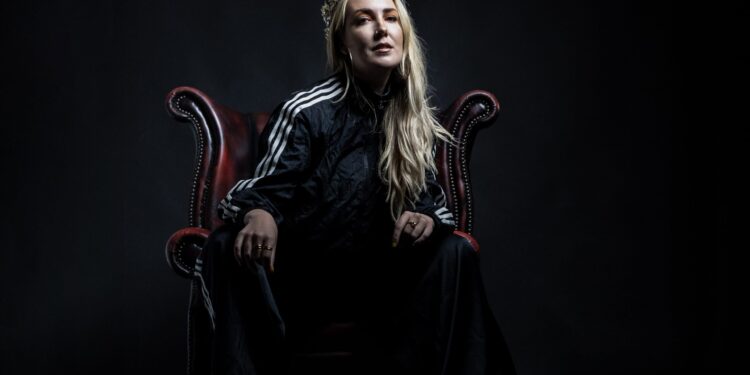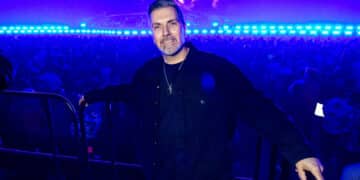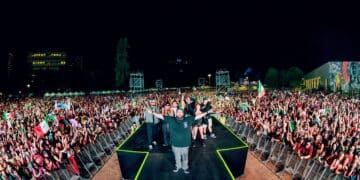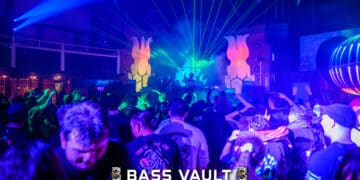Michael Tullberg Talks ‘DanceFloor Thunderstorm’, His Photography, & History Of The Rave Scene!
Photos come in all different shapes and sizes. There are photos that capture memories, trick their viewers with special techniques, ones that have been altered in development and more. Photos capture a moment in time, stopping it so that anyone can take a look into a world, strange or natural. You can hit almost any event anywhere and see at least a photographer or two capturing the festivities, but what if I told you that wasn’t always the case? What if I told you that there used to be far fewer photographers in the scene than there is now? Enter Michael Tullberg, legendary event photographer and author of Dancefloor Thunderstorm: Land Of The Free, Home Of The Rave.
Grab your copy of “Dancefloor Thunderstorm: Land Of The Free, Home Of The Rave” via his website!
While you may not always know the name behind the lens, you’ll definitely recognize the photos. Over the past twenty years, Michael Tullberg has made a name for himself in the rave scene. Whether he’s capturing intimate moments with artists in undisclosed locations, dark venues with limited production, or festivals that leave you stunned, his shots are up there with the best of the best.
One thing that has happened for me over time has been the ability to notice the focus certain photographers have in the scene and what drew me to Michael was a few things. First, having a career that was able to span both analog and digital photography immediately sets his work apart from others. Second, was seeing the vibrancy that came with his images, making them stick out compared to the average-joe photographers that have popped up in the digital era.
Lastly was reading his book, Dancefloor Thunderstorm, and seeing a history of the rave scene that has disappeared over time. I knew that not only did I have to catch his panel at EDMbiz 2016, but that he was someone who I would absolutely love to sit down with and have a conversation. Luckily for me, I was able to catch up with Michael after his panel to discuss the scene, how things were before, and more.
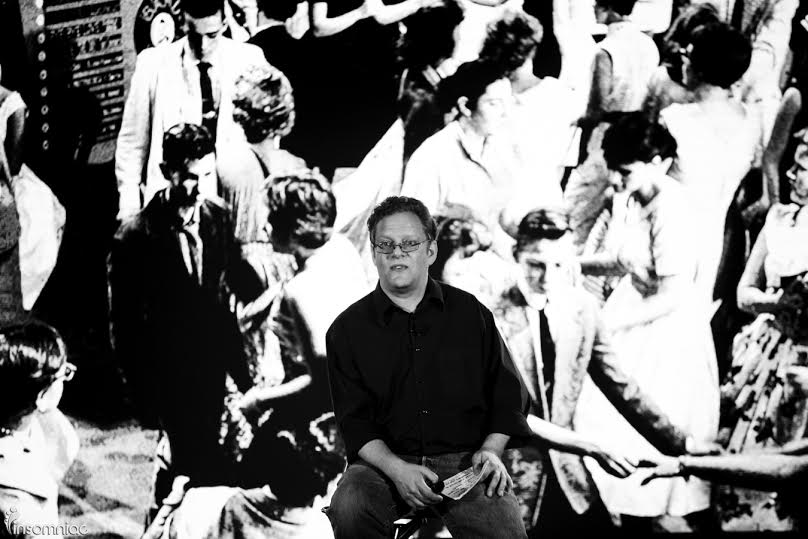
Photo Credit: Insomniac Events
Hey Michael, since we’re here at EDMbiz let’s start off by talking about EDC Las Vegas. What are your thoughts on the reunion of the old Insomniac Ravers that have come back into the scene?
I think that’s cool. I think that it’s very important that EDC hearkens back to its roots. This is not the only example of this going on. I mean on Sunday, I wish I could be there on Sunday because in the UpsideDownHouse they’ve got DJ Dan and Donald Glaude and loads of old school DJs and stuff. These are people who I used to hang out with in the rave scene like, every weekend.
So yeah, it’s great that the old school people have not forgotten and that Insomniac has not moved on in that respect. It would be very easy for someone like Insomniac to just leave all the old school stuff behind, and focus on what they’re doing in the here and now. But the fact that they’ve not forgotten, that they’ve gone back and they’ve maintained those relationships, that’s fantastic.
It’s kind of like an alumni type situation…
In a way. [Laughs] That’s actually a really good way to put it. I hadn’t thought of it in that respect, but yeah you’re right, we are very much alumni. Especially the ones at the very beginning, I mean the first one I shot was ’99, we had like, seven or eight thousand people there. It’s way different now.
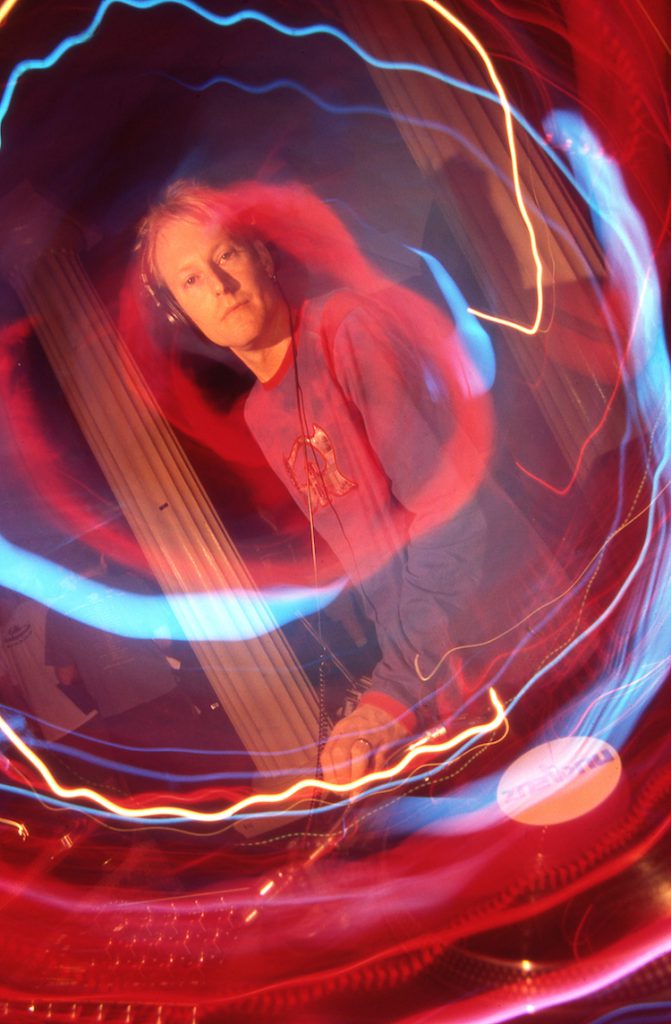
The rave scene has definitely transformed over the past three decades. Is there anything from the older rave scene that isn’t in the modern rave scene that you’d like to see return?
There’s a bunch. One thing about the modern rave scene is that, let’s put it this way, there’s a lot more skin involved in what people are wearing…or rather, not wearing. It really wasn’t like that back then, the old rave scene wasn’t sexualized in that respect. In fact, it was very much the opposite, and that was one reason why it was such a safe place for women to go to.
When I was shooting raves in the ’90s, in the [separate] LA club scene, these were the days of date rape drugs, you know, roofies and GHB, shit like that. When I tell people, “Remember roofies? No? Well, that was the point”, I’m describing the sick motivations of those criminals that were preying on women with those substances.
If I had a teenage daughter in those days, and I had a choice of sending her into the clubs or into the rave scene, I would have sent her into the rave scene every time, because it was a non-sexualized yet very warm and embracing thing. That has moved away, unfortunately, and when I see a scene become more sexualized in that respect it becomes more like pop music in a sense. The emphasis has changed.
Another thing about modern stuff, the festivals have gotten so much bigger and it is very difficult sometimes for DJs to directly relate to the audience with what’s going on. One of the things in the rave scene that we were very proud of and thought was very important was that the DJs were in direct proximity to the audience.
Very often, Christopher Lawrence and I talk about this in my book, about how the turntables were very often on the floor, on a card table or on stacks of cinderblocks, stuff like that. And the audience is was right there, five feet away, so what you had in those days was that it became a very interactive sort of thing. Because the DJ would put something on, the audience would respond, and then the DJ would notice the audience respond and say, “Okay, what’s the next one? Do I put this record on to keep this going?”, and it goes back and forth and back and forth. The interplay between the DJ and the audience.
But how do you do that when you’re a DJ when and you’re 70 feet in the air on a platform? How do you interact with the audience? And the sad fact is that a lot of them, and I’m not going to name names, but a lot of them don’t. I mean, we’ve all seen videos of people in the booth pretending to mix. When they bring their whole set on a thumb drive, I find that depressing.
I actually spoke with John 00 Fleming at Dreamstate in San Francisco about that, and he spoke about DJ’s not playing to the audience but rather to what they think they would want to hear.
Yeah, and it’s true. There are some DJs who can put together a killer set beforehand because they are in touch with what their audience is. But I think, unfortunately, that’s a minority.
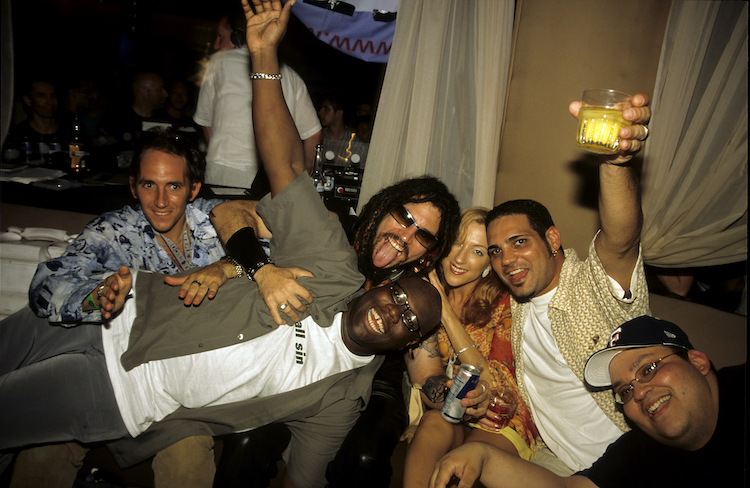
In the book, you featured interviews with Christopher Lawrence, Sandra Collins, and Mark Lewis. Were there any other artists that you would have liked to feature in there?
Oh sure, there was a lot that I would have loved to put in there. I would have loved to put Carl Cox and Frankie Bones in the book. The problem was that putting the book together was such a long process, on and off again, that a lot of people… when I had time available, other DJs were not available.
I tried to do interview stuff through email but that didn’t really work. It was really important to me to sit down with these guys and have not just an interview but a conversation about this. I’ve always felt that conversations bring out more in people. An interview is a very regimented process most of the time, whereas a conversation all sorts of stuff can come out.
You briefly mentioned San Diego in the book, I’m from San Diego so it hit home a little bit. Were there any memorable events outside of the ones you wrote about in ‘Dancefloor Thunderstorm’?
Oh, yes. I couldn’t cover all the events because there were so many. I didn’t really do San Diego that much, and the reason is, as I said in the presentation, I didn’t have to. We had everything coming through LA. We were so spoiled in that regard because I could almost pick a place at random and somebody great would be playing there. You could go from Thursday to Sunday and it would be nonstop quality entertainment.
It’s a shame that is gone, it was a very special set of circumstances that really could not be repeated, unfortunately. Especially now that you have fewer production companies throwing parties.
Thankfully in LA, there are still a bunch of mid-level and smaller ones that still do that, which means that almost any weekend, I could go out and find a great warehouse party with 500 people in there. With people like Doc Martin or Mark Farina or Steve Loria, people like that. To me, that’s home. Festivals are great, but I don’t need 100,000 people to have a good time. Having 10,000 or 5,000, or 500, ya know? It’s about the music, it’s about the vibe. It’s not about the spectacle.
I feel you on that one for sure, I think that some of my favorite events that I’ve attended have been smaller events that have a cool vibe, where everyone is there for the music.
Right, it’s not a social event. It’s not something you have to make an appearance at. You’re there for the same reason everyone else is there.
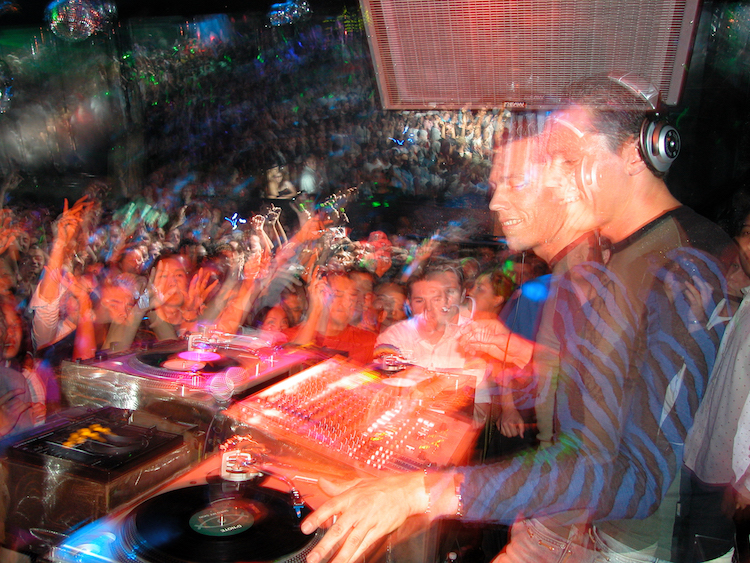
The pictures in your book are about the people and the community, and now it seems to be about the show, the fireworks, and things like that. You touched on it briefly during the panel, but do you feel that the way the story is told about events has changed drastically over time?
Yeah, it has changed. As I said on the stage, it has become more difficult to focus on the individuals. I mean, with all the special effects techniques that I was using, I was looking to create – at the risk of sounding very pretentious – I was looking to create pieces of art. I was looking to not simply document the rave scene because anybody can document something. It’s so easy now.
I wanted people to look beyond the surface of the picture and see what was really going on. If that meant throwing in my special effects stuff, great. One of the reasons why I developed some of those special effects was because some of those parties were smaller parties. They did not have big budgets, they simply did not have giant LED walls and all that. You had maybe a couple of brackets of lights, and that might be it.
So, you know, do you want to take a picture of just a dark room with some lights? Probably not. You want to add something to it, you want to let people know what that vibe was about. So that’s why I would introduce two-tone lighting, that’s why I would introduce stroboscopics and camera movement. Just to get that vibe on the film, you know?
It makes it stand out, it makes it look like something completely different. To me, that’s a problem with a lot of club photography. You get a laser or a light, but it is missing something. I think that is a difference between film and digital…did you make the transition to digital?
Oh yeah, I totally made the transition.
Do you still prefer film, though?
Well, the thing is that I’d love to be able to continue shooting on film professionally, but with what I do, especially with Getty Images…it has to be digital. And it’s the same system as Bennett was describing [in the panel].
For example, we (Getty) do Coachella every year. We just did it this year and we had a team of eight photographers, we had five runners getting memory cards back and forth between us and our editors, we had six editors, and these are the editors that Bennett would be very happy to work on his pictures. And we were just cranking out stuff on a constant basis.
We were shooting stuff so fast, so quickly, and there was no time to go edit. We had to get the cards to the runners and get them off because we were shooting for Coachella, so we were the main media outlet. So it has to go out [immediately], and that means you have to have good people.
Bennett has some of the best electronic music photographers on his team. [At] Getty, we have the best overall music photographers in the world. The guys at Getty, they could go and shoot EDC with no problem. While they’re certainly not ravers or anything like that, but they would get it because the talent level is so high.

Shooting many events over the years has exposed you to a lot of strange locations. Where is the strangest location that you have been able to shoot?
Good question! Strangest location… well, shooting in the desert is so strange because it’s an environment that is so completely removed from civilization. When you’re shooting a party in the desert, with the exception of Burning Man because that’s so huge now, but when you’re out in the desert you’ve got a set of tables, the sound system, a few lights, and that’s it. Maybe a generator…
And a blow-up alien…
[Laughs] Yes, and a blow-up alien in the case of Dune. So desert partying is a very primal thing because you’ve got sand, rocks, cacti, and the occasional rattlesnake, and that’s it. It is so removed from a clubbing atmosphere… oh yeah, and that’s the other thing, is out in the desert there is no light pollution, so you’re under a blanket of a billion stars. So it’s just an environment that does not exist in a city or a town. In that respect, it’s strange because it’s so far removed, but on the other hand, it’s wonderful.
In terms of other strange locations… I’ve shot parties on rooftops, I’ve shot parties on beaches. This is tough. I don’t think as far as location is the thing about strangeness, but the theme of the party.
There were definitely some parties that had some really oddball, bizarre themes. It was beyond the regular kandi raver sort of thing, and that’s great because that tells me the event promoter or the producer, they have a vision for this gig. They are not just doing something that everybody else is doing, they want their stuff to stand out. They want people to remember that.
Sometimes location plays into that, and sometimes not. If a gig has its own identity, that’s what is really important to me. EDC, of course, has always had its own identity, but that identity has changed a bit as this thing has grown and grown. But they have always had the carnival part as the core of the party.
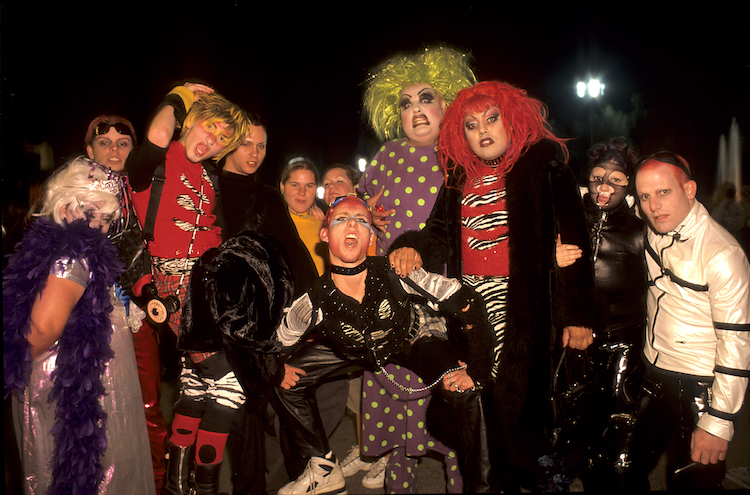
Do you think that as the mainstream, not necessarily the mainstream media, but the mainstream music listener has attended more raves, that the identity of raves has become more basic?
Well, in some cases it’s become more like pop music. The rave scene as it existed back then does not really exist now. It is because everything has gotten so much bigger and is moving more towards the mainstream. More mainstream audiences have been exposed to electronic music, especially through pop artists. Not necessarily rave artists, but pop artists who take elements from electronic music and inserting it into their own thing. Sometimes successfully, sometimes not.
I mean Christina Aguilera’s album was not a great success because it veered off of her core brand, so to speak. Then there are other artists who can bring stuff in and make it click. There is no set formula though, it’s hard to predict who is going to make it work and who is not.
I find it interesting that the DJs are now at the forefront of the title of the track, it will be Calvin Harris featuring Rihanna, instead of Madonna featuring Paul Oakenfold. It’s sort of flipped a bit…
It has, it really has. On one hand, though, I’m glad that the DJs are getting proper credit and that’s great. But on the other hand, with festivals and such, when you have the DJ up there the DJ, the name, has become the draw, the brand has become the draw. We did not have Calvin Harris’s and “Deadmice” [Laughs] back in those days. It was not really so much about those artists in a way, it was about their music. That’s what it was like back then.
Getting back to the turntables being on the ground, if you had a gig at the Alexandria Hotel back in downtown LA back in those days, you’d have those turntables on the ground with 500 to 1,000 people in the room. Say you had 1,000 in the room, 950 of them couldn’t see the DJs because the DJs were surrounded by a cluster of people who were watching them. So for the rest of the people, it was about the music. It’s not about the individual behind the decks, rather it’s less about the individual behind there and more about what they’re bringing to the table.
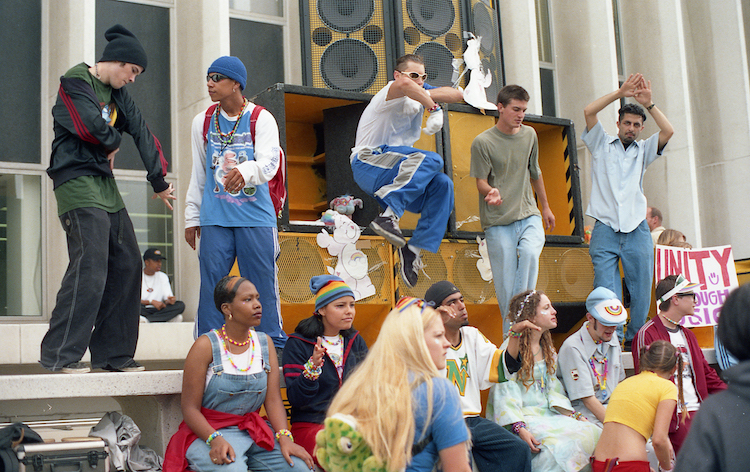
You were involved in the scene when the RAVE Act was enacted back in 2002. Do you feel the stance by the government hindered both the expansion of the scene and open discussion about drugs?
Most definitely, most definitely. it was ridiculous. The fact that it was not just the event promoters who could be arrested for this, but also the venue owners, I mean that is just… when this went down, we in the scene were like “What the fuck is this?” ya know? It definitely inhibited the growth of the scene in the short run.
Eventually, people like Pasquale and such would take things like EDC and grow them bigger and bigger. But Pasquale himself has said that part of this growth has been hindered by the fact that people like Drug Policy Alliance and DanceSafe cannot set up shop at their events. Because then the authorities can come in and say, “You see, you see, it is a drug party, it’s always been a drug party!” So yeah I find that ridiculous.
Do you think that the response that Los Angeles and San Bernardino have recently had…
[Bursts out laughing] San Bernardino… it’s nuts. You know, have these people never seen Footloose? It doesn’t work!
I was happy when LA County came back saying they weren’t going to ban anything, but it’s still a dagger in the side of events in LA. Even HARD has had to escape Los Angeles to run to San Bernardino, who apparently doesn’t want us there.
Yeah, I was just about to say that San Bernardino is only hurting itself in this case. One thing I question is why they are taking this attitude now, considering that San Bernardino was such a hotbed for raves from the 90’s onward? You know, the Orange Show [NOS Events Center] was one of the central locations for the raves that became the big ones, like EDC, like Nocturnal, Audiotistic, all of that.
For a long, long time the city seemed to have a very little problem with this. Why now? What is the rationale behind this? I don’t get it, I really don’t get it.



